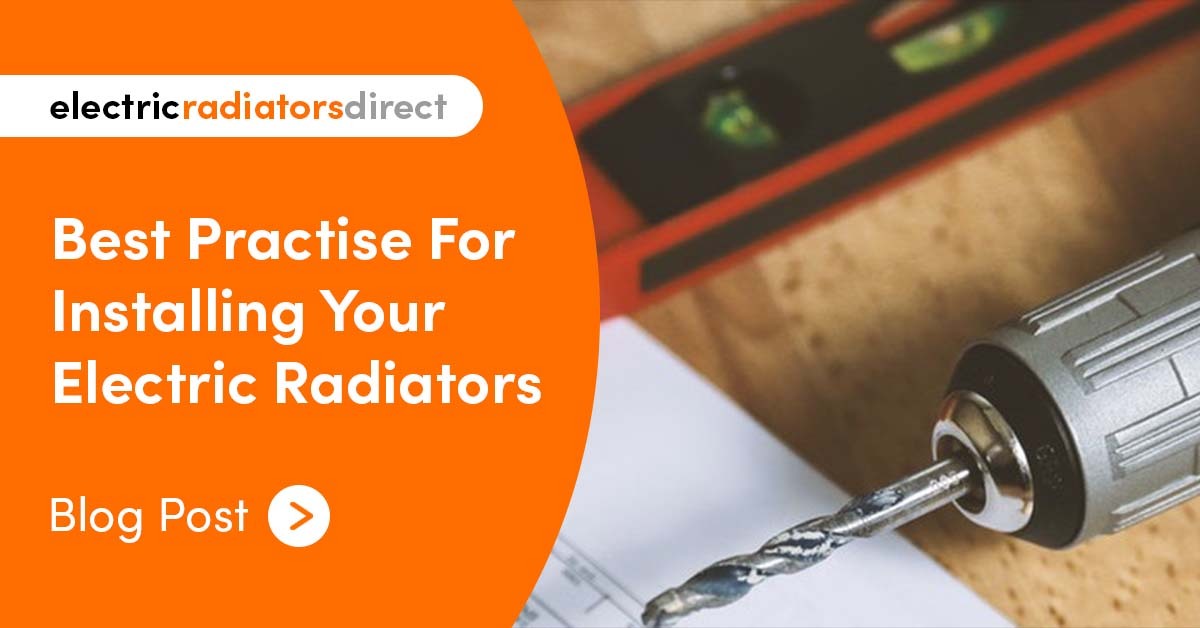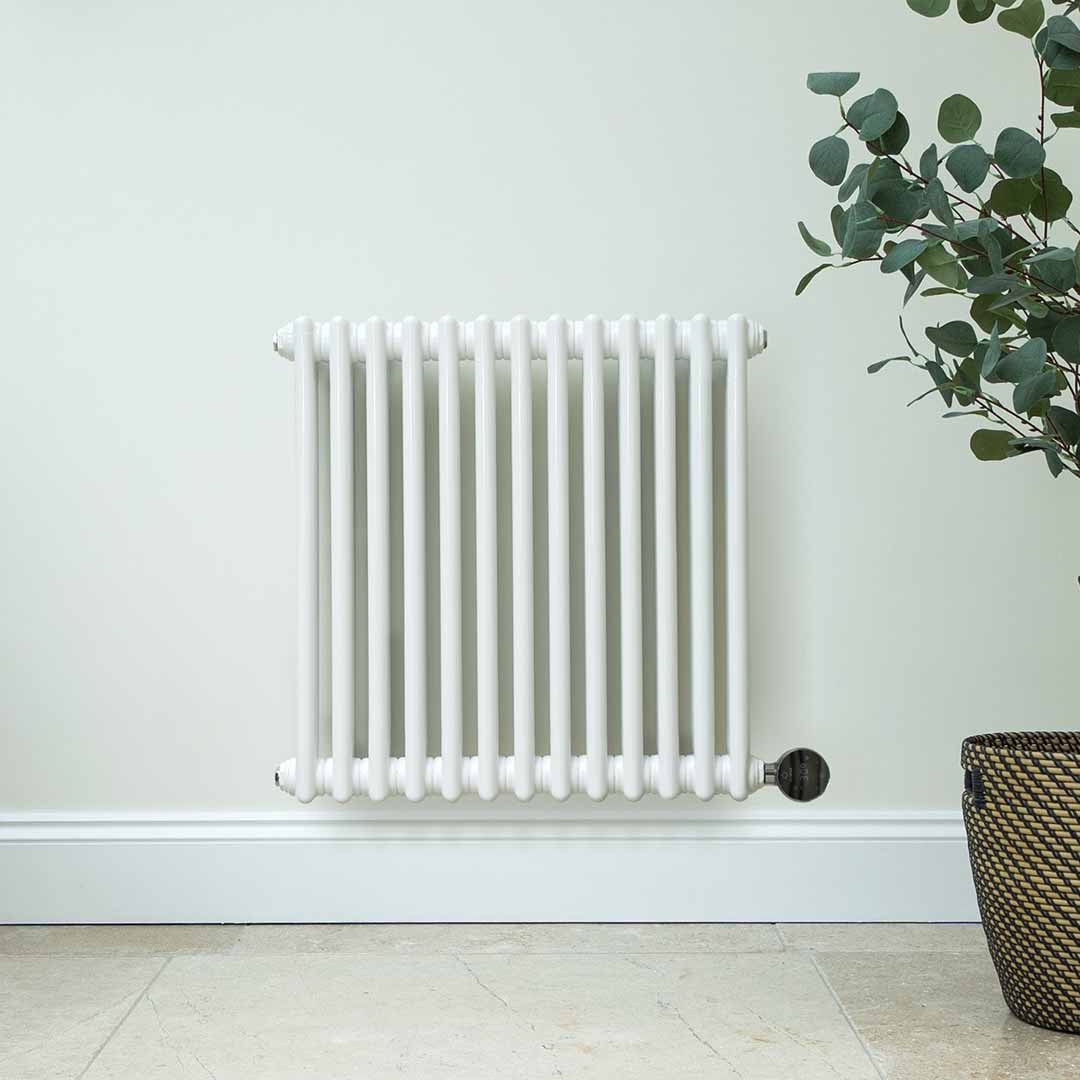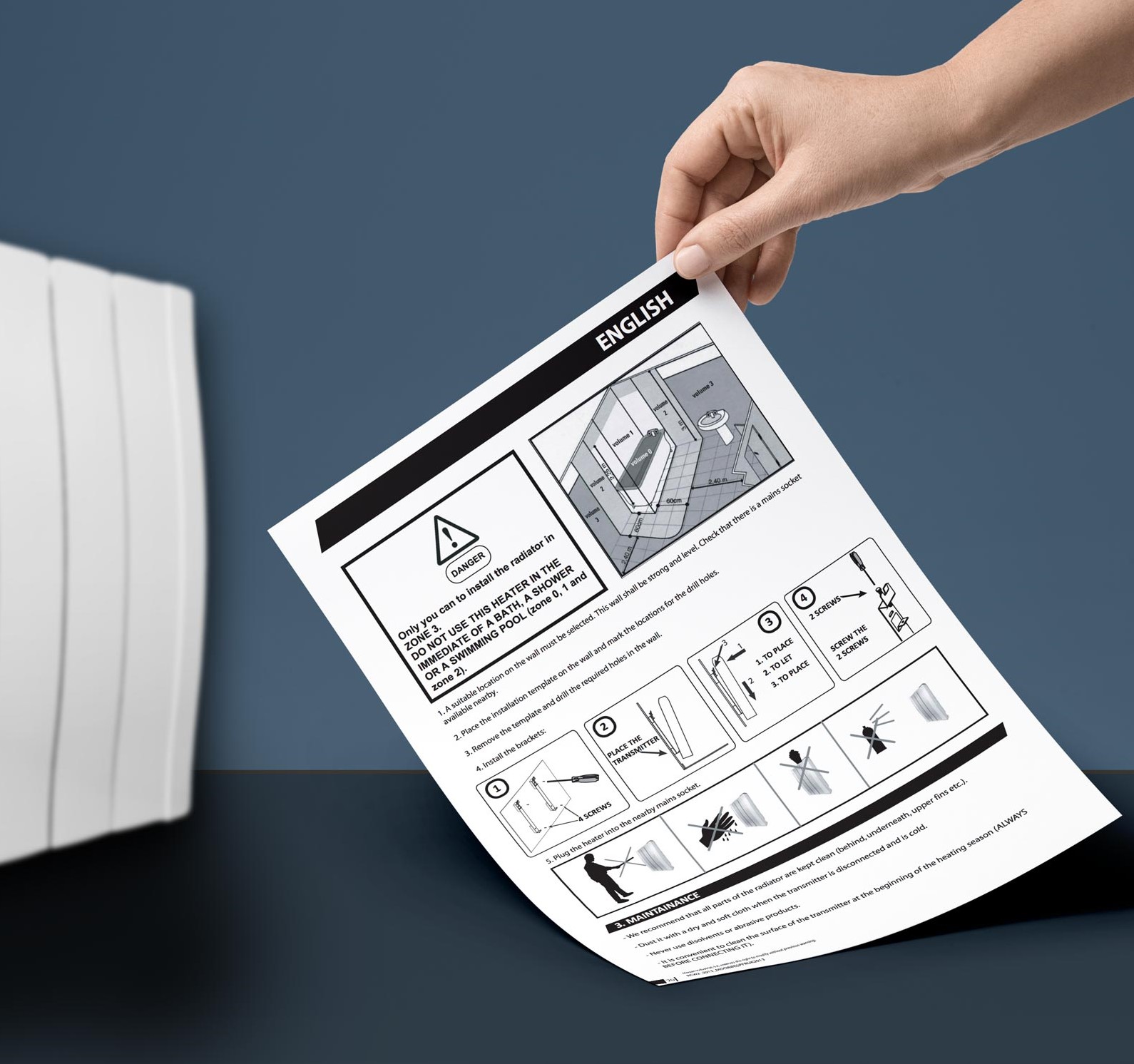

Last updated: Feburary 2023
You’ve bought your electric radiator and now you’re raring to get it up and ready but where to start? If you’re not a DIY expert – and let’s face it, many of us aren’t! – we’ve made a list of the main dos and don’ts so you can install yours with confidence. Here’s what you need to know…
1. If you’re installing more than one, speak to an electrician
Plug-in radiators are fantastic for a quick heating fix but if you’re installing more than one, you may need to have them them hardwired by a professional. Electric radiators are high wattage appliances after all, so if you plug in too many at once, you could overload the ring main of your property. Hardwiring into a fused spur avoids this issue and is more often than not a quick and easy job for an electrician. An additional plus point for going down this route is that a hardwired finish is neater, shows less visible wiring and keeps your plug sockets free for other electricals.
2. Check whether it’s designed for a wired or plug-in fitting
Some electric heaters like our range of designer electric radiators, have to be hardwired in all instances and this is usually the case for our designer radiators because they’re built to act as a permanent source of warmth rather than a portable solution. Though it’s tempting to go online and brush up on your electrical skills, wiring a heater into the mains is not a task for a well-meaning amateur – always leave this up to a professional to make sure it’s done to code. It’s worth noting that plug-in heaters can often be hardwired but the same can’t always be said for the opposite. Hardwired products don’t come with plugs for good reason and adding a plug to them can sometimes void the warranty, so if this is something you’re considering, be sure to check beforehand whether it’s suitable for this use.
3. Pick a suitable fitting location
Plug-in radiators are fantastic for a quick heating fix but if you’re installing more than one, you may need to have them them hardwired by a professional. Electric radiators are high wattage appliances after all, so if you plug in too many at once, you could overload the ring main of your property. Hardwiring into a fused spur avoids this issue and is more often than not a quick and easy job for an electrician. An additional plus point for going down this route is that a hardwired finish is neater, shows less visible wiring and keeps your plug sockets free for other electricals.
4. Read up on the product literature
We know that leafing through a product manual isn’t quite as exciting as curling up with the latest booker prize winning novel but it is an essential bit of reading (and it won’t take as long as you think, we promise). The product manual will tell you everything you need to know about installing the model you’ve purchased, including how to use the fixtures, as well as what clearance distances need to be observed. If you’re ever unsure about anything, reading the manual is a great place to start, and once you’ve finished, you can always treat yourself with something a little more interesting to read while your radiator keeps you comfortably heated.
Don't have your manual to hand? You can find documentation on how to install any one of our products on their individual product pages. Simply look under the Manuals & Installation tab.
5. Check what’s in your wall prior to drilling
We know that leafing through a product manual isn’t quite as exciting as curling up with the latest booker prize winning novel but it is an essential bit of reading (and it won’t take as long as you think, we promise). The product manual will tell you everything you need to know about installing the model you’ve purchased, including how to use the fixtures, as well as what clearance distances need to be observed. If you’re ever unsure about anything, reading the manual is a great place to start, and once you’ve finished, you can always treat yourself with something a little more interesting to read while your radiator keeps you comfortably heated.
6. Make sure the cable reaches the plug
Some electric heaters like our range of designer electric radiators, have to be hardwired in all instances and this is usually the case for our designer radiators because they’re built to act as a permanent source of warmth rather than a portable solution. Though it’s tempting to go online and brush up on your electrical skills, wiring a heater into the mains is not a task for a well-meaning amateur – always leave this up to a professional to make sure it’s done to code. It’s worth noting that plug-in heaters can often be hardwired but the same can’t always be said for the opposite. Hardwired products don’t come with plugs for good reason and adding a plug to them can sometimes void the warranty, so if this is something you’re considering, be sure to check beforehand whether it’s suitable for this use.
7. Start enjoying comfortable, long-lasting heat
We know that leafing through a product manual isn’t quite as exciting as curling up with the latest booker prize winning novel but it is an essential bit of reading (and it won’t take as long as you think, we promise). The product manual will tell you everything you need to know about installing the model you’ve purchased, including how to use the fixtures, as well as what clearance distances need to be observed. If you’re ever unsure about anything, reading the manual is a great place to start, and once you’ve finished, you can always treat yourself with something a little more interesting to read while your radiator keeps you comfortably heated.
Learn everything you need to know about installing electric radiators with our handy video guide.
Key learnings
- Many electric radiators can be DIY installed, however others may require a professional fitting by a qualified electrician. It's important to read your manual to find out which form of installation is best for your product.
- Make sure you pick a suitable location where you can safely install without blocking the radiator.
- Portable and wall-mounted installation is available for multiple electric radiators, but most electric radiators require the purchase of feet for freestanding installation.







